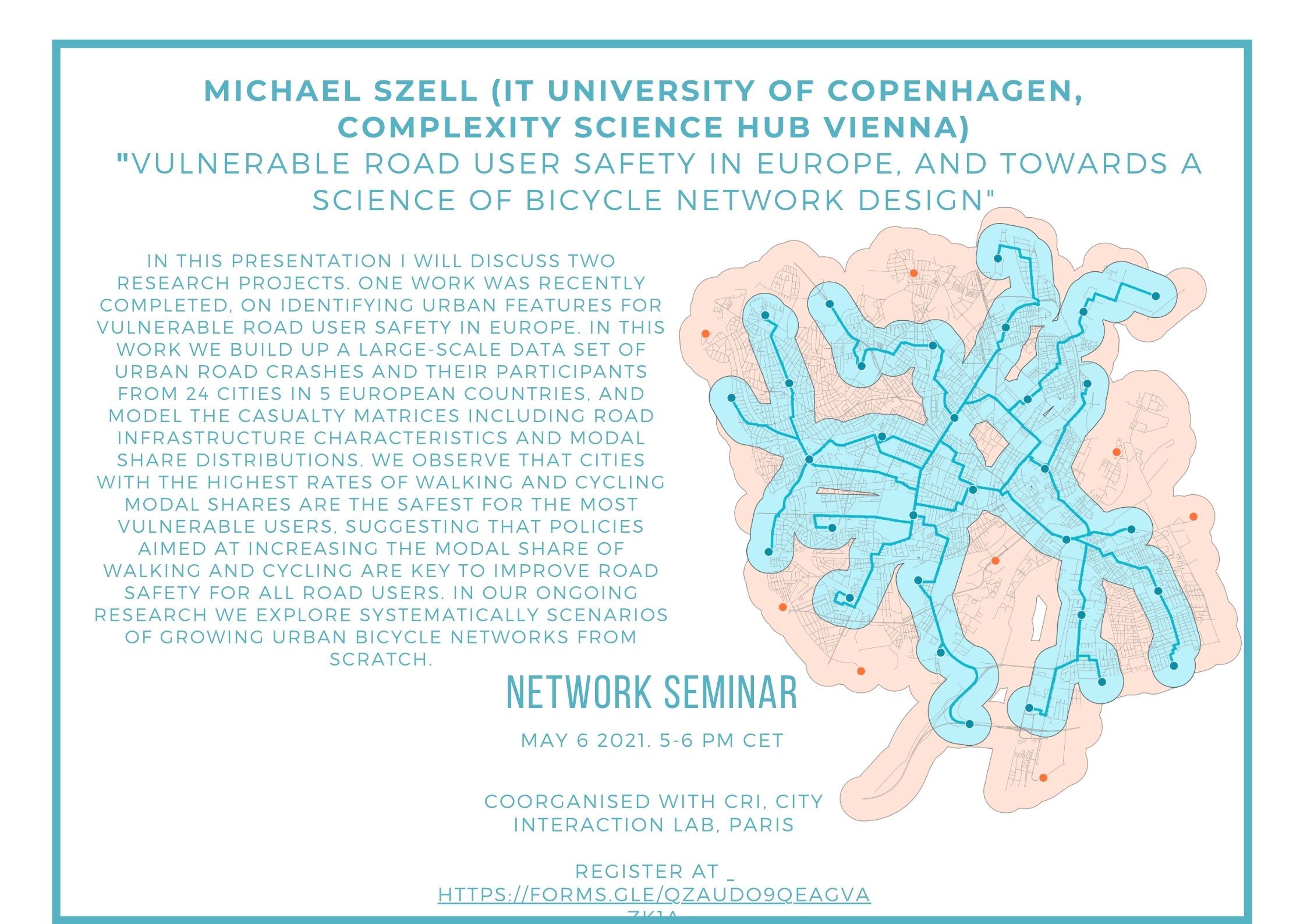City Interaction lab, network seminar 6th May 5pm CET
Liubov
We are happy to invite you for Open Lecture by Michael Szell "Vulnerable road user safety in Europe, and towards a science of bicycle network design"
Lecture is today, May 6th (Thursday), 2021, 5pm-6pm CET
Registration page https://forms.gle/qzaUDo9qEaGVazk1A
Link to ZOOM is here:
https://zoom.us/j/91828356247?pwd=V3FYSHJnSEpPdGFXWHdZem82Y2lQdz09
(Please do not post it anywhere)

Speaker bio:
Michael Szell is associate professor in Data Science at IT University of Copenhagen, and external faculty at the Complexity Science Hub Vienna. His research aims to quantify the patterns behind interlinked human behavior and human-built structures through mining large-scale data sets. At ITU he has co-founded the NEtwoRks, Data, and Society (NERDS) research group bringing together interdisciplinary researchers to focus on quantitative projects at the boundary of network science, data science, and computational social science.
github: https://github.com/mszell
twitter: https://twitter.com/mszll
Illustration of work
Michael follows an interdisciplinary approach drawing from data science and network science. His current focus is on sustainable urban mobility and data visualization. His recent and ongoing research includes data-driven strategies to grow bicycle networks, using tools from multilayer networks to assess multimodal transport infrastructure, and a call for human-centric urban data science. Previously he has also developed the award-winning massive multiplayer online game "Pardus", www.pardus.at, and several interactive data visualization platforms.
Short abstract
In this presentation I will discuss two research projects. One work was recently completed, on identifying urban features for vulnerable road user safety in Europe. In this work we build up a large-scale data set of urban road crashes and their participants from 24 cities in 5 European countries, and model the casualty matrices including road infrastructure characteristics and modal share distributions. We observe that cities with the highest rates of walking and cycling modal shares are the safest for the most vulnerable users, suggesting that policies aimed at increasing the modal share of walking and cycling are key to improve road safety for all road users. In our ongoing research we explore systematically scenarios of growing urban bicycle networks from scratch. Here we study the process of growing a graph triangulation between an arbitrary set of points of interest routed on a city’s existing street network. We run different variations of this growth process on 62 diverse cities, tested against a random null model, and find non-trivial developments of network indicators implying that to be successful in bicycle network planning, cities must invest 1) with the right growth strategy, and 2) boldly, to overcome short-term deficiencies until a critical mass of bicycle tracks has been built up.
